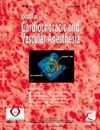Hospital Teaching Status and Outcomes in Type B Aortic Dissection: Analysis of More Than 40,000 Patients
IF 2.3
4区 医学
Q2 ANESTHESIOLOGY
Journal of cardiothoracic and vascular anesthesia
Pub Date : 2025-01-01
DOI:10.1053/j.jvca.2024.10.039
引用次数: 0
Abstract
Objective
To assess the association of hospital teaching status with outcomes of patients presenting with type B aortic dissection (TBAD).
Design
Retrospective cross-sectional study of the National Readmissions Database (NRD), from 2016 to 2020.
Setting
Hospitals across the United States stratified by teaching status.
Participants
TBAD patients.
Interventions
Surgical repair, thoracic endovascular aortic repair (TEVAR), and conservative medical management.
Measurements and Main Results
A total of 44,981 TBAD patients were included, of whom 5421 (12%) were managed at a nonteaching (NT) hospital and 39,470 (88%) were treated at a teaching (T) hospital. Propensity score matching (1:1) yielded 4676 matched pairs. In-hospital mortality (12.9% for NT vs 12.5% for T; p = 0.58) and 30-day readmission (23.3% for NT vs 21.8% for T; p = 0.12) outcomes were not statistically significantly different between the groups. On multivariable regression, teaching status was not associated with higher odds of in-hospital mortality (odds ratio [OR], 0.943; 95% confidence interval [CI, 0.841-1.057; p = 0.31) or 30-day readmission (OR, 0.965; 95% CI, 0.88-1.058; p = 0.44). At teaching hospitals, TEVAR was associated with higher odds of in-hospital mortality (OR, 1.898; 95% CI, 1.596-2.257; p < .01), while hospital volume was associated with higher odds of 30-day readmission (quartile 3: OR, 1.488; 95% CI, 1.106-2.002; quartile 4: OR, 1.684; 95% CI, 1.256-2.257; p < 0.01).
Conclusions
Hospital teaching status alone was not associated with in-hospital mortality or 30-day readmission in TBAD patients. At teaching hospitals, management by TEVAR and greater hospital volume were associated with in-hospital mortality and 30-day readmission outcome, respectively.
医院教学状况与 B 型主动脉夹层的预后:对 40,000 多名患者的分析。
目的:评估医院教学状况与 B 型主动脉夹层(TBAD)患者预后的关系:评估医院教学状况与B型主动脉夹层(TBAD)患者预后的关系:2016年至2020年国家再入院数据库(NRD)的回顾性横断面研究:参与者:TBAD患者:干预措施干预措施:手术修复、胸腔内血管主动脉修复术(TEVAR)和保守治疗:共纳入44981名TBAD患者,其中5421人(12%)在非教学医院(NT)接受治疗,39470人(88%)在教学医院(T)接受治疗。倾向评分匹配(1:1)得出 4676 对匹配结果。两组患者的院内死亡率(NT 为 12.9%,T 为 12.5%;P = 0.58)和 30 天再入院率(NT 为 23.3%,T 为 21.8%;P = 0.12)在统计学上无显著差异。在多变量回归中,教学状态与较高的院内死亡率(几率比 [OR],0.943;95% 置信区间 [CI,0.841-1.057;P = 0.31)或 30 天再入院率(OR,0.965;95% CI,0.88-1.058;P = 0.44)无关。在教学医院,TEVAR与较高的院内死亡率几率相关(OR,1.898;95% CI,1.596-2.257;p < .01),而医院规模与较高的30天再入院几率相关(四分位数3:OR,1.488;95% CI,1.106-2.002;四分位数4:OR,1.684;95% CI,1.256-2.257;p < 0.01):结论:医院的教学水平与TBAD患者的院内死亡率或30天再入院率无关。在教学医院,TEVAR治疗和医院规模越大,院内死亡率和30天再入院率就越高。
本文章由计算机程序翻译,如有差异,请以英文原文为准。
求助全文
约1分钟内获得全文
求助全文
来源期刊
CiteScore
4.80
自引率
17.90%
发文量
606
审稿时长
37 days
期刊介绍:
The Journal of Cardiothoracic and Vascular Anesthesia is primarily aimed at anesthesiologists who deal with patients undergoing cardiac, thoracic or vascular surgical procedures. JCVA features a multidisciplinary approach, with contributions from cardiac, vascular and thoracic surgeons, cardiologists, and other related specialists. Emphasis is placed on rapid publication of clinically relevant material.

 求助内容:
求助内容: 应助结果提醒方式:
应助结果提醒方式:


